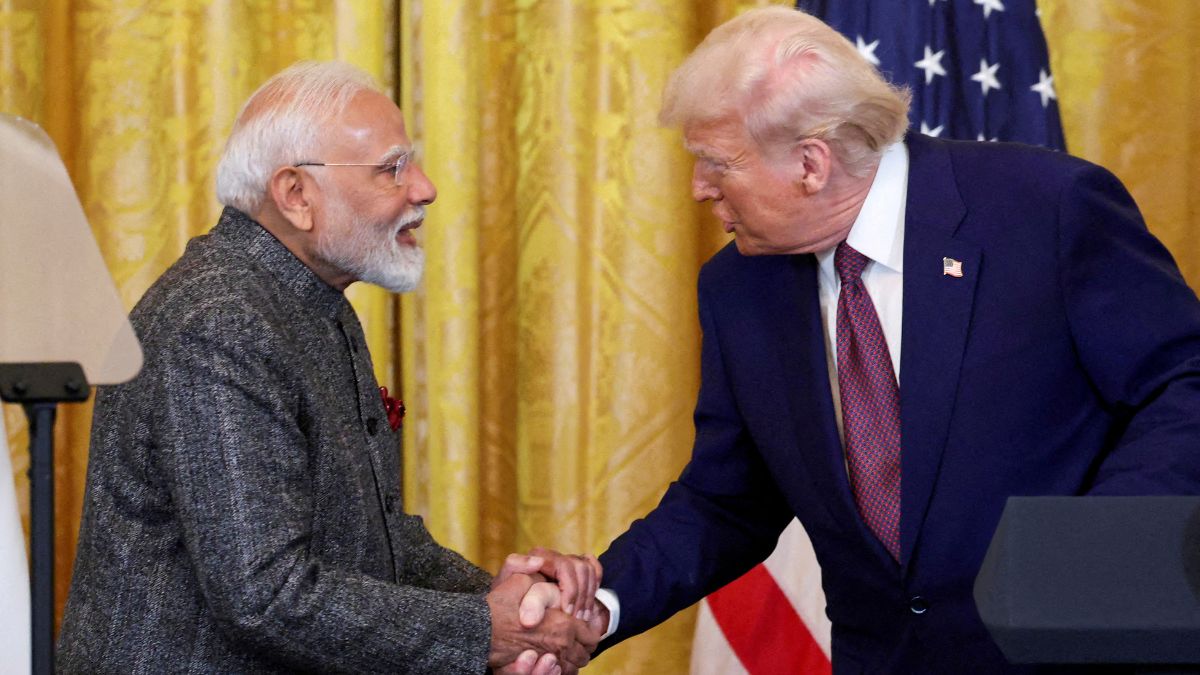EXPLAINER | How did India escape the list of countries that received the latest ‘tariff letters’ from Donald Trump?
 File: US President Donald Trump and Indian Prime Minister Narendra Modi shake hands at the joint press conference at the White House on February 13 2025 | REUTERS
File: US President Donald Trump and Indian Prime Minister Narendra Modi shake hands at the joint press conference at the White House on February 13 2025 | REUTERS
In what could be said as an “eleventh hour” reversal, the United States delayed imposing Donald Trump’s “Liberation Day” reciprocal tariffs on India until August 1 2025. This suspension of tariffs—which was originally set to be lifted on July 9 2025—signalled that India and the US were nearing the interim deal ahead of the bilateral trade agreement (BTA).
Back in April, Trump announced reciprocal tariffs on many countries. Among them, India was slapped with a 26 per cent reciprocal tariff. However, the industrialist-turned-president quickly turned around, pausing the implementation for 90 days, i.e., till July 9, this Wednesday.
And now, with New Delhi and Washington closing in on the final round of negotiations on clinching an interim trade deal, the first tranche of the BTA seems to be on schedule for fall (September-October) this year.
“The Harmonized Tariff Schedule of the United States (HTSUS) shall be modified, effective with respect to goods entered for consumption, or withdrawn from warehouse for consumption, on or after 12.01 am eastern daylight time on July 9 2025, by suspending headings 9903.01.43 through 9903.01.62 and 9903.01.64 through 9903.01.76, and subdivisions (v)(xiii)(1)-(9) and (11)-(57) of U.S. note 2 to subchapter III of chapter 99 of the HTSUS, until 12.01 am eastern daylight time on August 1 2025,” read the recently signed executive order from The White House.
In the executive order, Trump stated that he signed off on the extension “based on additional information and recommendations from various senior officials, including information on the status of discussions with trading partners.”
On Monday, Trump asserted that the potential India-US trade agreement was almost a done deal. Recalling how his US administration made a deal with the UK and China, Trump said that “we’re close to making a deal with India”.
Then, he turned to other nations whom he said were unsuccessful in negotiating with the US, stating that “we send them a letter “. Executive letters signed by the POTUS were also posted by the official account of Trump on Truth Social. They were addressed to the premiers and/or the acting leaders of Bangladesh, Bosnia and Herzegovina, Cambodia, Indonesia, Japan, Kazakhstan, Lao People’s Democratic Republic, Malaysia, Serbia, South Africa, South Korea, Thailand, and Tunisia.
In the letter to Bangladesh Chief Adviser Muhammad Yunus, Trump said that he was slapping a 35 per cent tariff on “all Bangladeshi products sent into the United States, separate from all sectoral tariffs”.
India seems to have evaded these “letters of reprimand”, but that did not stop Trump from once again taking credit for India’s successful Operation Sindoor against terror elements across the border, once again claiming he stopped the war between India and Pakistan. He even went on to say that “we stopped that over trade”.
“We said we are not going to be dealing with you at all if you’re going to fight,” insinuated Trump, as if the US held the trade deal as a bargaining chip to prevent further escalations.
However, Trump’s latest move to push the suspension of reciprocal tariffs until August 1 came as music to the ears of Indian exporters. This also meant that the US was willing to negotiate terms with trading partners in a constructive way, according to the exporters in the country.
Ajay Sahai, the director general of the industry body Federation of Indian Export Organisations (FIEO), hailed the suspension of tariffs. “It provides an extended window for dialogue, which can help our negotiators to sort out remaining contentious issues,” Sahai told agencies.
The export body head also said that it would give India a comparative edge if New Delhi were successful in finalising the interim deal by the end of July.
With the latest move, the Indian delegation gets around two more weeks to iron out issues in the interim trade deal with their US counterparts. Reports, however, suggest that India has made its stance clear with the US on the interim deal, and the decision now lies with the US.
Business